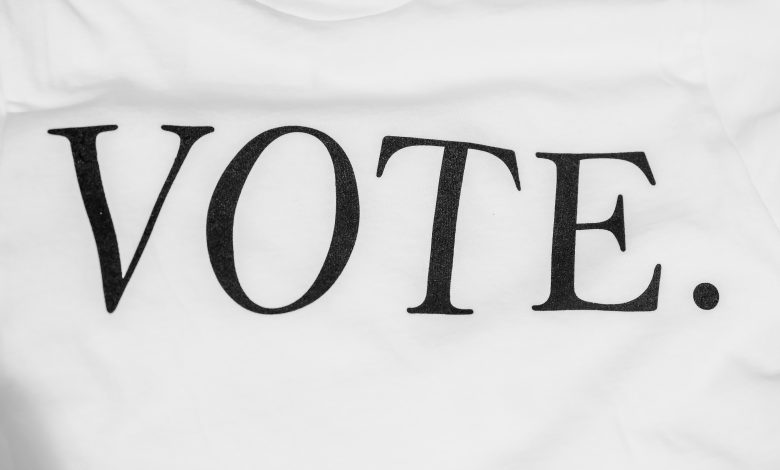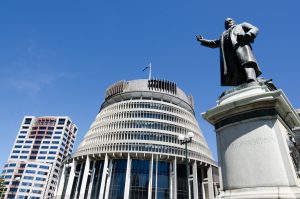School News’ education policy round-up
The first week of Term 4 is also smack-bang in the election period. School News makes voting for educators easy with our policy breakdown.

It’s the final week of election 2023. Advance voting began last week Monday 2 October and ends this Friday, with the official election day on Saturday 14th October.
It’s a hectic time for educators, with the first week of Term 4 coinciding with the election period. Some may have cast advance votes in preparation for Term 4, but given recent polling, some may still be undecided. Educators with a moment to spare may wish to research party policies for themselves using this election policy tool. Others with older ākonga might even be able to incorporate this election, and each party’s policies, into a learning opportunity.
Read the Term 3 edition of School News HERE
But for those without a moment to spare, School News has a summary and a break-down of each party’s major education policies, as well as any commentary from leading colleagues on the matter. As well as being a major focus of this election, education is also the third biggest area of government spending. And depending on election outcomes, these policies may well affect how educators and colleagues do their jobs – and with what resources – for the next government term and beyond.
Below, School News breaks down the What, How and Why of each party’s education election promises.
Labour Party
What: Extend 20 hours free ECE to 40,000 two-year-olds.
Why: “The early years of a child’s life are critical, and we are committed to supporting families during this time by reducing financial pressures and improving access to quality education.”
What: Increase subsidies to ECE centres.
Why: Ease fees pressure.

What: More comprehensive and regular compliance checks on teacher employers.
Why: Ensure available funding reaches teachers.
What: Reduce student-staff ratio in Years 4 – 8 from 29:1 to 28:1 by 2025.
How: “Develop a long-term plan for staffing and resourcing of schools to keep up with changing needs and the modernisation of best practice.”
Why: “Labour will work towards the recommendations of the Ministerial Advisory Group on staffing.”
What: Raise numeracy and literacy attainment nationwide.
How:
- Two million hours of free catch-up maths and literacy tutoring for secondary students
- Develop and deliver programmes targeted at raising maths and literacy progress of students in Years 2 – 6
- Continue rollout and encourage uptake of Better Start Literacy Programme
- Fund maths and literacy upskilling for primary and intermediate teachers to better implement the new curriculum and lift quality of teaching
- Roll out Core Teaching Requirements in literacy and numeracy, guaranteeing foundational teaching and learning for these subjects.
- Legislate core learning areas in maths and literacy from 2026.
Why:
- Target support for students affected by learning disruptions such as COVID and extreme weather events.
- Programmes for ākonga Māori and Pacific students will aim to increase educational equity.
- Clarify what needs to be taught and when throughout the curriculum
- Ease workload on teachers and improve teaching standards

What: Require financial literacy to be taught in schools from 2025
How: Financial literacy skills will follow the model used to roll out New Zealand histories curriculum. The programme will likely be delivered through maths and social sciences subjects where there are existing resources, pending consultation with the sector. Essential learning outcomes will be set at different year levels.
Ensure that this is not an extra demand on teachers by creating access to exisitng programmes, partnerships and support at the curriculum centre at the MoE.
Why: Evidence shows current financial literacy in Aotearoa is inconsistent, and that most young people wish they’d learnt more about money at schools. Students will develop core competencies around:
- Saving and investing
- Budgeting and financial management
- Setting financial goals and planning ahead
- Banking
- Borrowing, credit and debt
- Kiwisaver and insurance
- Income and taxes
- Identifying and managing risk

What: Continue free period products for schools and Ka Ora, Ka Ako | Healthy School Lunches
How: “Labour will commit $650 million to continue [free lunches] at nearly 1000 schools and kura through the next term of Government.”
Why: Remove barriers to education.
What: Continue Learning Support Coordinator rollout
How: Support will begin with Specialised Learning Support Coordinators in Kaupapa Māori and Māori medium education. Continued rollout working toward aspiration of one LSC for every 500 students. Improve funding and workforce capacity for LSC rollout.
Why: Highest Needs Review has recommended improvements to improve education equity for students with additional learning needs.
“We will implement the recommendations of the Highest Needs Review to enable all students to achieve their potential at their local school… Labour is committed to implementing a new comprehensive, fairer, more student-centred, integrated and inclusive system of quality support in all schools.”
What: Increase youth engagement and attendance
How:
- “Ending historical underfunding for disengaged youth services,
- Requiring property improvements to alternative education facilities and
- Ensuring accountability and monitoring for their progress and educational development.”
- Funding attendance service
- Funding attendance officers in schools
- Improve collection and reporting of attendance data

What: “Continue to invest in learning support modifications to school buildings for students with special needs, including automatic doors, lifts, fencing, hoists and bathroom modifications.”
What: Improve development and retention of principals.
How:
- Develop a comprehensive school leadership strategy
- Work towards improved staffing management formulas
- Work towards increasing leadership advisors
- Consider updating and expanding Kahui Ako
What: Ensure rainbow students feel safe and accepted in learning environments
How:
- Encourage school adoption of MoE’s sexuality education guidelines, which outline current best practice for supporting inclusion and wellbeing of ākonga with diverse sexual orientations, gender identities, expressions and sex characteristics.
- Ongoing professional development for teachers including: understanding sexual orientation, gender diversity, sex characteristic variation, bulling and UN Convention on rights of the Child
- Ensure safe school curriculum and environment through promotion of gender-neutral bathrooms and uniforms and Rainbow inclusivity.
- Review Relationship and Sexuality education as part of the 2024 Health Curriculum refresh.
What: Expand Te Reo Māori education programmes
How: “Develop a comprehensive strategy to promote and support the teaching and learning of Te Reo Māori in early childhood education, through professional development and training, teaching resources and support for Māori language immersion programmes.
“Continue expansion of Te Ahu o Te Reo… revamp the Māori medium and Kaupapa Māori pathways programme so that more Māori tamariki are reconnected with their language and culture.”
Why: Revitalise Te Reo Māori by ensuring all children have the opportunity to learn Te Reo Māori.

What: Investigate support for Wānanga
How: “Consider, with providers, the establishment of a framework that protects their unique status [of tauira]… reinforce the importance of Māori boarding schools.”
Why: “To provide the pastoral and cultural care to assist Tauira to achieve success at pre degree level [and] train a new generation of Māori leaders.”
What: Ensure that career services are available to Māori students
Why: “We know that it can be a big step to transition from education to work. Labour will ensure… that [Māori students] are getting the best advice for life after education.”
What: Ensure curricula of schools reflects the tikanga and pūrakau of their local iwi and hapū.
How: “Continue to work with iwi and hapū to ensure their local tikanga and pūrakau are reflected within the school curriculum in their rohe.”
Why: To “promote understanding of Māori culture from an early age.”
Sources:
- Labour Manifesto 2023, P22 – 25, accessed 02.10.2023.
- Release: Compulsory financial skills in schools, accessed 02.10.2023.
- Release: School lunches on the line this election, accessed 02.10.2023.
- Labour’s Rainbow Manifesto, P3, accessed 02.10.2023.
- Labour’s Māori Manifesto 2023, P7, accessed 02.10.2023.
National Party
What: Ban mobile phone use in schools
How: Through the whole school day phones will be “off and away”. Schools decide how to enforce the ban. Parents will be able to contact children through the school office; exceptions to the ban will be made for students with health conditions or special circumstances.
Why: “To turn around falling achievement, students need to focus on their schoolwork during their precious classroom time. That means doing what we can to eliminate unnecessary disturbances and distractions.”

What: Minimum class-time mandates for reading, writing and maths
How: An hour of maths and two hours of reading and writing will be required every day in primary and intermediate schools.
Share best-practice guidance with schools on timetabling to meet these requirements.
Why: Reverse trends of declining literacy and numeracy in New Zealand.
“There is currently too much variation between how much time different schools spend teaching the basics. This inconsistency embeds inequalities that disadvantage the most vulnerable children.”
What: Rewrite primary and intermediate school curriculum.
How: Include clear requirements about specific knowledge and skills primary and intermediate schools need to teach for each school year in reading, writing maths and science.
Why: National believes the current curriculum is too vague, broad and spans too many school years. Lack of annual progress outcomes allows some students to fall behind. Believe a clearer and more detailed curriculum will “challenge and empower learners, support teachers, and ensure every child makes consistent progress.”
What: More standardised testing and reporting for primary and intermediate students in reading, writing and maths.
How:
- Use the e-asTTle assessment tool to assess student progress twice a year, every year from Years 3 – 8.
- Introduce common reporting template
- Age-appropriate skills check-in toward end of Year 2 to assess basic skills such as counting, phonics and letter formation
- Expand NMSSA study to sample all year groups of reading, writing, maths and science annually, to monitor progress toward target of 80 percent of Year 8 students being at curriculum by 2030.
Why: “Ensure parents know how their child is progressing, where they might need help, and where they can be extended.”
Assessment is “powerful tool for ensuring progress” and equips teachers and caregivers to understand their child’s learning.

What: Achievement targets for students
How: Aim to have 80 percent of Year 8s at or above expected curriculum level at their age for reading, writing and maths by 2030, as measured by the University of Otago’s National Monitoring Study of Student Achievement (NMSSA).
National also aims for NZ students to be in the top 10 for maths, reading and science in international PISA rankings by 2033.
What: Better training and more tools for teachers.
How:
- Exit tests for primary and intermediate school teaching graduates demonstrating expertise in reading, writing, maths and science teaching.
- Teacher recertification requirements that prove professional development in the same areas.
- Reprioritise PLD funding toward reading, writing, maths and assessment upskilling.
- Develop a free online resource bank with lesson plans and materials aligned with the new curriculum
- Abolish teacher registration fees, funded from the operating allowance through annual Budget.
Why: Reduce teacher workload and ensure teaching consistency. Ensure teachers can demonstrate expertise in reading, writing, maths and science instruction, and ability to use assessment to lift achievement.

What: Mandated structured literacy approach
How:
- Require structured literacy approach to be taught in primary schools
- Introduce phonics checks for Year 2s to measure reading progress
- Provide structured literacy interventions for learners who need support
- Ensure teacher training on structured literacy
Why: “In 2021, New Zealand recorded its lowest ever score in the Progress in International Reading Literacy Study (PIRLS) that measures the reading ability of Year 5 students… New Zealand’s own NMMSA shows 37 percent of Kiwi kids are behind reading expectations at Year 4, with 44 percent behind by Year 8.
“Structured literacy teaches children in an explicit and systematic way that aligns with the science of how our brains learn best, starting with the smallest units of sound (phonemes) and building up from there. Some schools have already adopted structured literacy with great success. National believes all children should have access to this proven method.”
Sources:
- National will ban cell phone use at school, accessed 02.10.2023.
- Teaching the basics brilliantly, accessed 02.10.2023.
- National’s literacy guarantee, accessed 02.10.2023.
Green Party
What: Increase funding for community-run ECE, kindergartens and kōhanga reo, working toward universal, public and free ECE.
What: Improve working conditions and staff-to-student ratios at all levels of education, from ECE to high-school.
What: Resource universal teaching of te reo Māori and tikanga Māori in all public schools and support rangatiratanga aspirations of Kura Kaupapa Māori, Kura a iwi, Kōhanga reo and Wananga.
What: Provide education on health relationships, managing emotions and affirmative consent in all schools.
Why: Combatting our high rates of intimate partner violence, sexual violence and child abuse.

What: Ensure adequate support for students with disabilities and additional learning needs
What: Create school hubs with on-site health and social services, including mental health support.
What: Ensure schools are accessible by foot and bike
How: “Create safe walking and biking routes for every school through more pedestrian crossings and lower speed limits near schools.”
Why: “Our towns and cities can be places where everyone can move around using affordable, climate-friendly buses and trains, by bike, or walking.”
What: Address racism and discrimination in schools
How: Increase children’s belonging and cultural connection through social cohesion and inclusion programmes at all schools.
Why: Green party wants Aotearoa to be “the best place in the world to grow up,” but believes tamariki are missing out in their crucial years leading to long-term consequences for wellbeing.

What: Require civics education in schools and supporting lowering the voting age to 16.
Why: “The time is now to create a more representative democracy.”
What: Expand Ka Ora, Ka Ako | Healthy lunches in schools programme.
How: Funding will come from the Greens’ proposed wealth tax to expand the programme to 135,000 more children. All schools with an equity index of 540 will be covered from 2024, covering over 400 more schools.
Why: Removing barriers to education, easing cost of living, creating jobs in local economies. Co-leader Marama Davidson says it’s “the right thing to do”.
Source:
- Green Party Manifesto 2023, accessed 02.10.2023.
- Free school lunches paid for with a wealth tax, accessed 02.10.2023.
ACT Party
What: Ensure all schools participate in standardised testing.
What: Extend the B4 school check to include education progress as well as health; ECE providers which consistently fail will risk losing funding or license.

What: Set minimum criteria for any curriculum taught in NZ primary schools, allowing for multiple versions.
How: MoE to approve curricula based on the following criteria:
- Science-based approach to adapting curriculum, meeting progressions in cognitive development.
- Structured system that builds on foundations of skills and knowledge in core subjects.
- Level of detail that provides clear guidance for teachers on what to teach, when, and transparency for the public on what schools are expected to deliver.
- Content that is evidence based and sexular (excluding religious studies).
What: Develop online league table like Australia’s ‘My School’.
Why: to help parents understand their school’s performance compared to others.
What: Enforce higher literacy and numeracy standards from 2025.
How: Conduct mock exams in 2024 to gauge progress on higher literacy and numeracy.
What: Abolish UE as separate qualification.
How: Replace NCEA Level 3 requirements with current UE requirements.
What: Increased employer and tertiary provider input to achievement and unit standard development.

What: Establish a fund for excellent teachers.
How:
- $250 million a year to be administered by school principals to recognise and recruit for teaching excellence.
- Funding will be allocated to schools in proportion to the number of teachers at that school.
Why: Current pay system limits rewarding of teaching excellence, inhibiting incentives for continued professional growth and meeting the needs of schools.
What: Reform MoE.
How:
- Consult with experienced school principals on what assistance schools need from MoE and what powers schools should have directly.
- “Strip it back to basics” by focusing on negotiating collective agreements, monitoring student and school progress, setting minimum standards and accreditation and auditing schools.
Why: “The Ministry has increased its full-time equivalents by 55 percent, its powers over schools are extensive, yet educational outcomes are worse than ever. Schools are not just being told what to do, they are being told how to do it.”
What: Repeal new school curriculum
Why: The ACT party believes that the curriculum offers an inaccurate and superstitious version of science and that the curriculum is too ideological.
What: Re-establish Partnership Schools
How: Bring back partnership school model and enable public schools to apply for conversion to a partnership school under the following requirements:
- Take on all existing students
- Provide secular education if school had previously done so
- Consideration to accessibility of alternative education if children choose not to attend partnership schools.
Why: “The cookie-cutter public school model restricted the ability for schools to innovate and deliver different models of education.
“Not all partnership schools were a success, but unlike public schools, struggling partnership schools were subject to high levels of monitoring and accountability and were shut down when they did not achieve the outcomes they were funded to achieve.”

What: Enable schools to opt out of NCEA
How: Fund NCEA at the same rate as alternative internationally recognised qualifications such as International Baccalaureate and Cambridge.
Why: Increase competition and choice in schools; determine if NCEA is fit for purpose.
What: Improve attendance
How:
- Develop a traffic-light system for unjustified absences, which will be publicly available in real-time.
- Green light (up to 10 percent absence), require schools to attempt contact with family on day of unjustified absence
- Orange light (10 – 30 percent). Require schools to hold meeting with student and family and create a plan to reintegrate student back into classroom
- Red light (more than 30 percent truant). Referred to MoE for further action which may include fines and referral to Police.
- Redirect truancy funding to individual schools
- Introduce infringement notices for caregivers of truant students
What: Provide every child with independent fund for education.
How:
- Long-term vision is to provide every child with a Student Education Account (SEA) where parents can directly access the funds that the government currently spends on education from ECE to tertiary.
- Kiwisaver model where parents will see funding balance and make individual choice on how to fund their child’s education throughout their school years from ECE to tertiary.
- Extra funding to support special needs and disabilities would be added to SEA.
Why: Ensure NZ schools are responsive to parental demand rather than “political orthodoxy”.

What: Reform process for failing schools.
How:
- Use information on attendance and educational progress to prioritise ERO inspections
- Ensure ERO evaluations are consistent and based on clear, object and relevant criteria.
- Enforce clear and structured interventions for identifying and intervening in underperforming schools.
- Introduce tender process for existing school operators to take-over the campus of failing schools. Applications will consider schools’ track record, and MoE is responsible for selecting best candidate in tender where there is more than one applicant.
- Evaluate outcomes of school intervention.
Why: Parents and children should be able to access more choice in schools and have access to high performing schools. Current system mishandles failing schools, creating education inequality.
Sources:
- Real choice in education, accessed 02.10.2023.
- Building the foundations for education success, accessed 02.10.2023.
- The new curriculum is garbage. ACT will bin it, accessed 02.10.2023.
- Solutions to the Truancy Crisis, accessed 25.07.2023.
- Reforming failing schools, accessed 02.10.2023
Te Pāti Māori
What: Increase kaupapa Māori education funding.
How:
- Funding equity with mainstream equivalents
- $200m fund to drive whānau, hapū and iwi education and training initiatives, including establishing new hapū-based wānanga.
- Implement Te Kōhanga Reo settlement claim, significantly increasing operational funding for kōhanga, recognising kaiako qualifications and guaranteeing pay equity.
Why: “Kaupapa Māori education is under-resourced, undervalued and remains marginalised in the education system.”
What: Make Te Reo Māori and Māori history core subjects until Year 10.
How:
- Increase and promote scholarships available for young Māori to train as teachers of Te Aho Matua and for reo Māori speakers to train as teachers.
- Establish $20m fund for teachers to develop their reo.
- Invest $20m into the development of Te Reo Māori resources.
- Renumerate Primary and Secondary schools and kaiako based on their competency of Te Reo Māori.
- Invest $40m for early childhood to secondary school kaiako to develop their reo
- Require all Primary schools to incorporate Te Reo Māori into 25 percent of their curriculum by 2026 and 50 percent by 2030.

What: Improve educational equity for Māori ākonga.
How:
- Require a minimum of 25 percent of education budget to be directed to Māori models of delivery and pastoral care.
- Fund schools to hire additional Māori support staff who are well-paid and centrally funded.
- Establish a Māori-led taskforce with the mandate to transform how Māori students with disabilities and learning differences are taught and supported.
- Ensure Māori staff are hired and existing Māori staff are paid extra to lead cultural programmes such as kapa haka, taiaha, raranga and running school-based marae.
- Remove expulsion for ākonga below school-leavers’ age of 16
- Free digital devices and internet for Year 4 – 13s via School N4L system.
- Require all schools to have Māori staff in senior leadership teams.
- Require schools to seek to develop formal relationships with mana whenua
- Require BoT and senior staff to undertake training in kaupapa Māori education and Te Tiriti issues.
- Fund free breakfast and lunch programmes in all low-decile primary and intermediate schools
Why: Te Pāti Māori wants to overhaul mainstream education to support equity for ākonga Māori utilising lessons learned from Māori medium education models.
Māori are also disproportionately affected by disability, neurodiversity and learning differences, with 26 percent of Māori identifying as disabled in 2013.

What: Establish an authority to oversee Māori language funding and audit providers.
Why: Ensure providers meet cultural and reo Māori competency standards.
What: Create more pathways for school-leavers.
How:
- Establish $276m fund to ramp up STEM and STEAM academies like Pūhoro STEM academy.
- Double existing Māori and Pacific trade training and cadetships placements per annum.
- Permanently remove fees from apprenticeships.
- Create more pre-degree pathways for Māori and Pacific students who have no achieved UE.
- Develop apprenticeship schemes in renewable energy, agriculture, digital, construction and engineering sectors.
- Fund hapū and iwi-led initatives that support youth employment, particularly in conservation and clean energy.
Why: There are too few pathways for well-paid employment that don’t include tertiary education. Just 13.5 percent of rangatahi Māori were not in employment, education or training (NEET), twice the rate recorded for European and Asian youth in June 2020.
Sources:
- Education and Training, published 05.08.2021, accessed 02.10.2023
- Te Reo Māori, published 06.08.2021, accessed 02.10.2023.
NZ First
What: Remove gender and sexuality education from the curriculum.
Why: “Restore education and stop indoctrination”.
What: Enforce compulsory education.
Why: Combat declining attendance.

bradcalkins
What: Ensure Plunket is adequately funded.
What: Education treated as investment, not expenditure.
Why: “Educational investment is critical for economic and social recovery”.
Source:
- “Let’s take back our country”, Rt. Hon. Winston Peters speech at Mt Smart Stadium, NZ First Convention 23.07.2023, accessed 02.10.2023.
- New Zealand First 2023 Commitments, accessed 07.09.2023.
- New Zealand First Purpose and Principles, accessed 02.10.2023.
New Conservatives
What: Remove left-wing ideologies from education.
How:
- Stop teaching “‘critical race theory’, ‘gender theory’, ‘decolonisation’, and extremist ‘climate science’ and sex ‘education’” in schools.
- “End the witch hunts against schools and teachers who do not follow the left-wing Party line.”
- “Promulgate educational solutions that have been proven in the real world, rather than ideological and academic theories.”
- “Ensure that schools support parental authority rather than undermining it.”
- “Give teachers the tools to maintain discipline.”

What: Promote alternatives to state schools.
How:
- Promoting homeschooling, special character schools and early trades training
- Reimburse parents who homeschool children.
What: Empower parents and local communities to drive education.
How:
- Defund MoE
- Give control of curricula to school boards and communities
- Remove current curriculum
- Empower and promote parents as first teachers
- Give families control over government funding for childcare and education.
Sources:
- Strengthen Families, accessed 02.10.2023.
- Education, accessed 02.10.2023.
The Opportunities Party (TOP)
What: Build a new primary and secondary school in North-West Christchurch.
Why: “TOP leader and Ilam candidate Raf Manji… believes a suite of investments are needed to complete the rebuild program and deliver key services residents can be proud of.
These investments focus on healthcare, transport, policing, heritage and education.”
What: Expand civics education.
How: This policy is an offshoot of the party’s TEAL card policy, which would give under 30s free public transport, healthcare and more if they complete a National Civics Education programme before 23.
Why: “This program is about future-proofing New Zealanders to become more resilient citizens through a focus on the 4 C’s: Conservation, Civil Defence, Community Service and Civics.”

What: Encourage facilitated play approach in early years of schooling.
Why: “Build curiosity in children and youth”
What: Improve quality of professional development for teachers.
How: Unknown
What: “Offer fair pay for all teachers, increase funding for teaching assistants and improve specialist support in schools”.
What: Encourage structured literacy in schools.
How: Invest in the programme, including establishing accredited training providers for teachers
What: “Give direct cash support to parents for help with early childcare & education.”
What: “Implement a contracting model for ECE that requires the government to award contracts based on the quality of service provision, with a focus on child and community centered outcomes.”
Source:
- Public Services, https://www.top.org.nz/public-services, accessed 09.10.2023
- Christchurch plan, https://www.top.org.nz/christchurch-plan, accessed 09.10.2023









